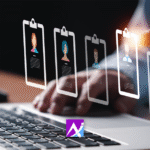As we enter into a time of unprecedented turnover and hiring, being strategic with new employee onboarding continues to be a fundamental focus for many organizations.
Investing time and capital into improving the onboarding experience will likely produce a substantial ROI by increasing engagement and productivity levels while decreasing turnover. In fact, according to Glassdoor, organizations with a strong onboarding experience improve new hire retention by 82% and productivity by more than 70%.
If you think you’re probably doing an okay job onboarding, you should think again. According to Gallup, a hefty 88% of employees don’t feel that their companies provide a good onboarding program. And this is turning the best of times, not during remote pandemic onboarding. A negative onboarding experience makes an employee twice as likely to search for a new role, and increased turnover has a large cost.
Organizations should be looking at how they can improve their onboarding experience and how to re-onboard employees who started during the pandemic.
Most onboarding programs primarily focused on paperwork and process, which have an essential role in onboarding but shouldn’t be the program’s focus. A survey by HCI found that 58% of the onboarding experience focused on paperwork and process, ignoring more of the elements surrounding people and culture. Any successful onboarding program needs to account for all of the aspects of joining an organization. Additionally, your organization needs consistency in its approach and programs. By creating a formal onboarding program, you will be more likely to achieve onboarding goals and a consistent experience for all new hires within the organization.
One of the things you can do to improve employee experience is to expand your company’s onboarding program beyond the first week of employment. At most organizations, according to the same HCI survey, the onboarding program occupies new hires for a week and then largely or entirely ends. Some onboarding programs continued for 90 days, between 50 and 62 percent, depending on the role, but after 90 days, the program ends. Onboarding best practice is to extend the program beyond the week, and at minimum doing check-ins at the 30, 60, and 90-day mark. There is an enormous amount of information you throw at someone when they first start—expecting them to absorb it all within a week and then leaving them on their own puts the employee and the employer in a bad spot. You should consider scheduling additional check-ins after 90-days to ensure that the employee is still having a good experience and has all of the tools they need to be successful.
As part of your onboarding process, you should include a discussion about what motivates and engages an employee. This engagement discussion can be with the new employee or between HR and the hiring manager. With hiring assessments, you can expedite the process of employee engagement before day one by using comprehensive wiring profile reports. It can also help provide a framework for future check-in discussions and gives the hiring manager a better understanding about how to meaningfully communicate with their newest team member.
Why You Need to Improve Your Onboarding Experience





